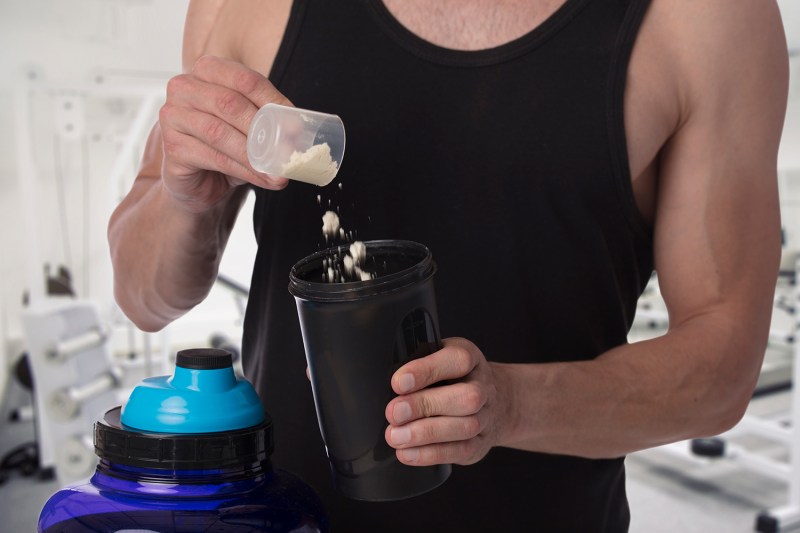Considering the extra work companies have to put into vegan protein powder to make it plant-based in the first place, the flavor can be pretty hit or miss. Non-vegan powders that contain dairy ingredients also tend to add sugars that make the flavors plenty sweet and easy to consume with just water or milk alone.
So what about EVR-Fit Edge? Is there vegan protein powder that’s tasty and still a healthy source of protein? Let’s find out!
Pros and Cons of EVR-Fit Edge Protein Powder

Pros
- High in protein
- Has 5 grams of fiber per serving
- High in calcium, iron, sodium, and potassium
- Low in fat and sugars
- Great option for vegans
- Contains 86% organic ingredients
- Has 5 grams BCAAs to support muscle recovery
Cons
- Taste could be improved
- Contains a proprietary blend
- Contains 17 servings per container, while other powders typically have 30
- Processed in a facility with common allergens
Nutritional information
This protein powder comes in two flavors: Chocolate and antioxidant berry blend. While I cannot attest to the berry flavor, I did try the chocolate flavor, and I wasn’t the biggest fan. However, this is common when it comes to vegan powders, and I do think this powder would be very enjoyable when added to other foods and beverages.
Chocolate Protein Powder

Ingredients
- Protein blend (organic pea protein, organic fava bean protein, organic pumpkin seed protein)
- Organic cocoa (processed with alkali)
- Natural flavors
- Sunflower lecithin
- Sea salt
- Stevia extract
- Monk fruit extract
Important Nutrition Facts
Calories: 180
Total fat: 3 g
Total carbohydrates: 11 g
Dietary fiber: 5 g
Total sugars: 1 g
Protein: 30 g
Calcium: 140 mg
Iron: 5 mg
Sodium: 200 mg
Potassium: 680 mg
Antioxidant Berry Blend Protein Powder

Ingredients
- Protein blend (organic pea protein, organic fava bean protein, organic pumpkin seed protein)
- Natural flavors
- Guar gum
- Sea salt
- Monk fruit extract
Important Nutrition Facts
Calories: 180
Total fat: 2 g
Total carbohydrates: 12 g
Dietary fiber: 3 g
Total sugars: 2 g
Protein: 30 g
Calcium: 170 mg
Iron: 4 mg
Sodium: 220 mg
Potassium: 590 mg
Should you buy EVR-Fit Edge Protein Powder?

Beyond the taste, I would recommend this brand of protein powder. The ingredients are natural and straightforward; there is a proprietary blend, which you would typically want to avoid because of the lack of specificity of information, but it’s a small blend that doesn’t make too much of a difference when it comes to the protein itself.
There are 30 grams per serving, which is on the higher end of protein powders in general, especially plant-based ones. The powder is also high in fiber, iron, calcium, and potassium, and it contains hardly any sugar.
Overall, I would recommend that you try the EVR-Fit Edge protein powder. You may want to mix it into foods like oatmeal and smoothies to support the taste, but it appears to be a high-quality product that’s more natural in comparison to other protein powders out there.
Editors' Recommendations
- A cottage cheese breakfast is an easy way to hit protein macros — try these tasty ideas
- 7 delicious, portable, high-protein snacks that will support your weight loss goals
- Smart nutrition: Benefits of personalized vitamins and supplements
- Does collagen count as protein? What you need to know about counting your protein macros
- Here are the benefits of taking vitamin D supplements – what you should know




